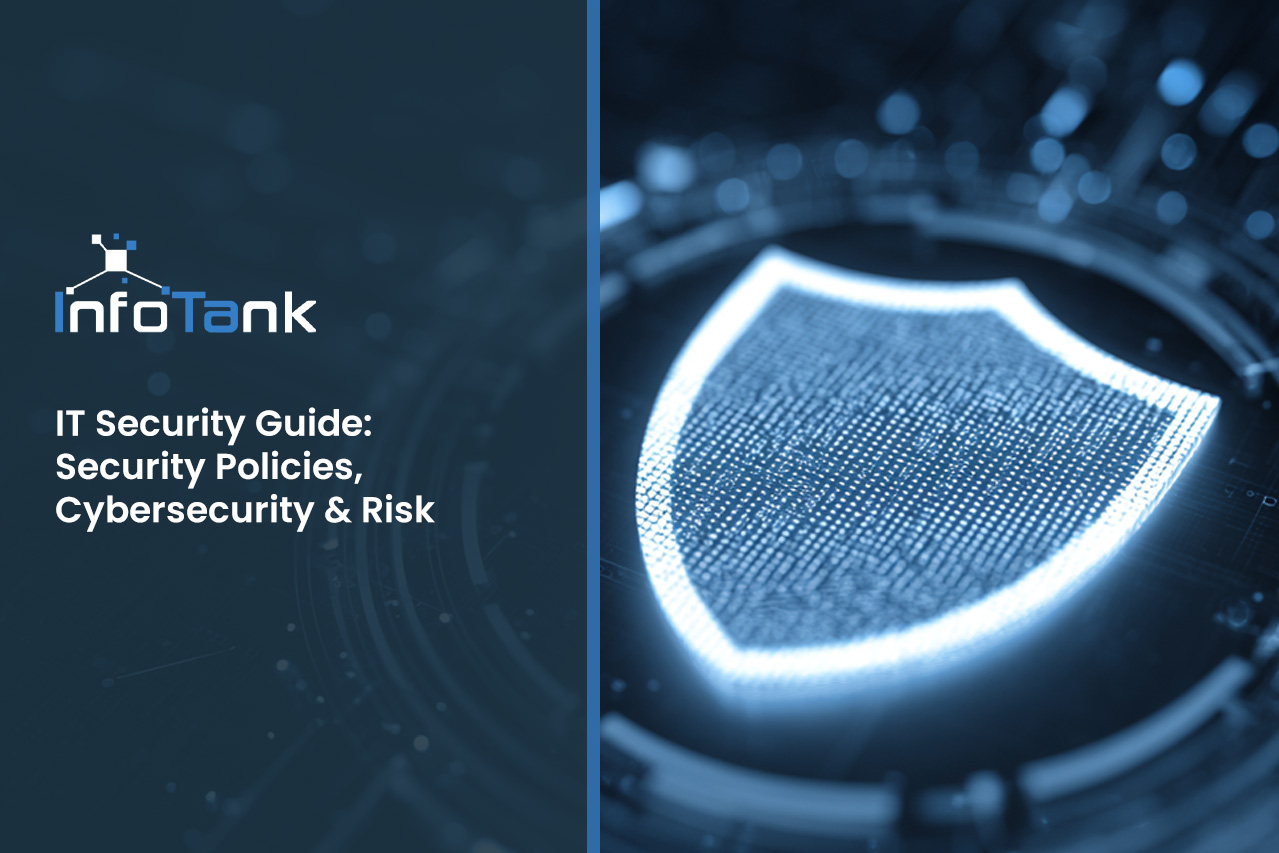
IT Security Guide: Security Policies, Cybersecurity & Risk
Creating and maintaining an effective IT security policy is essential for protecting your organization’s data and systems. A strong policy helps reduce the risk of a security incident, ensures compliance with regulations, and supports your business objectives. In this blog, we’ll explain what an IT security policy is, how templates can help, and why information security policies are critical. We’ll also cover best practices, roles and responsibilities, and how to handle risk assessment and data protection.
Understanding the purpose of an IT security policy
An IT security policy is a formal document that outlines how an organization protects its information technology systems and data. It sets the rules and expectations for employees, contractors, and partners when using company systems. This policy is the foundation for all other security measures.
A well-written IT security policy helps prevent unauthorized access, data breaches, and other cyber threats. It also ensures that everyone in the organization understands their responsibilities when it comes to protecting sensitive data. By aligning with your business objectives, the policy supports growth while keeping risks in check.

Key components of an IT security policy
Every IT security policy should include several core elements. These components help create a clear and enforceable framework for managing security.
Security policies and procedures
These are the detailed rules and processes that guide how your organization handles security. They cover areas like access control, acceptable use, and incident response.
Security policy FAQs
Including a section that answers common questions helps employees understand the policy. It also reduces confusion and improves compliance.
Information security roles and responsibilities
Clearly defining who is responsible for what ensures accountability. This includes IT staff, department heads, and end users.
Information security policies enforcement
Your policy should explain how rules will be enforced. This might include audits, monitoring, and consequences for violations.
Template use for consistency
Using a template makes it easier to create a consistent and complete policy. Templates help ensure you don’t miss critical sections.
Security incident response planning
Every policy should include steps for responding to a security incident. This helps minimize damage and recover faster.
Cyber security awareness training
Training employees on cyber security best practices is essential. It reduces the risk of human error and strengthens your overall defense.
Benefits of a strong IT security policy
A reliable IT security policy offers several practical advantages:
- Reduces the risk of data breaches and cyber attacks
- Helps meet compliance requirements and avoid penalties
- Clarifies employee responsibilities and acceptable use
- Supports secure network security and system access
- Provides a framework for managing security controls
- Builds trust with customers and partners

Risk assessment and policy alignment
Risk assessment is a key part of building an effective IT security policy. It helps you identify potential threats and prioritize your defenses. By understanding where your vulnerabilities are, you can create policies that target those areas.
Aligning your policy with the results of a risk assessment ensures that your efforts are focused and practical. It also helps you allocate resources more effectively and avoid unnecessary spending.
Best practice strategies for policy development
Creating a strong IT security policy involves more than just writing rules. It requires a strategic approach that considers your organization’s unique needs.
Involve key stakeholders
Include input from IT, HR, legal, and leadership teams. This ensures the policy is practical and enforceable.
Use a clear outline
Organize your policy with a logical structure. Start with an overview, then cover specific topics like authentication and firewall settings.
Address confidentiality and data protection
Make sure your policy explains how sensitive data will be protected. This includes encryption, access controls, and secure storage.
Define acceptable use
Explain what employees can and cannot do with company systems. This helps prevent misuse and protects your network.
Include audit and monitoring procedures
Regular audits help you verify compliance and identify weaknesses. Monitoring tools can alert you to suspicious activity.
Plan for breach response
Have a clear plan for how to handle a data breach. This includes notifying affected parties and restoring systems.
Keep it updated
Review and revise your policy regularly. Technology and threats change, so your policy must evolve too.

Implementing your IT security policy effectively
Once your policy is written, the next step is implementation. Start by communicating the policy to all employees. Use training sessions, emails, and internal portals to make sure everyone understands what’s expected.
Enforce the policy consistently. Use tools like authentication systems and firewalls to support compliance. Conduct regular audits to check for gaps and update the policy as needed. Make sure your incident response plan is tested and ready to go.
Common challenges and how to overcome them
Even with a solid plan, implementing an IT security policy can be difficult. Here are some common issues and how to address them:
- Lack of employee awareness: Provide regular training to keep staff informed.
- Outdated policies: Review and update your policy at least annually.
- Inconsistent enforcement: Apply rules fairly across all departments.
- Complex language: Use simple, clear wording to improve understanding.
- Limited resources: Prioritize high-risk areas and use templates to save time.
- Resistance to change: Involve employees early in the process to gain buy-in.

How InfoTank can help with IT security policy
Are you a growing business looking to improve your IT security policy? If you’re managing sensitive data or facing compliance requirements, a strong policy is essential. Many companies struggle to create and enforce one that fits their needs.
At InfoTank, we help businesses build and maintain practical, effective IT security policies. Our team works with you to assess risks, define roles, and implement policies that support your goals. Contact us today to get started.
Frequently asked questions
What should be included in security policies?
Security policies should include rules for system access, acceptable use, and handling of sensitive data. They must also outline procedures for responding to a security incident. These policies help protect your network security and ensure that all users understand their responsibilities.
A good policy also includes guidelines for password management, use of encryption, and regular audits. It should support your business objectives while minimizing risk.
How do I create an information security policy?
Start by identifying your organization’s key assets and potential threats. Then, use a template to structure your policy and include sections on authentication, firewall settings, and incident response. Make sure to involve stakeholders from IT and legal teams.
Your policy should be easy to understand and enforce. Include clear roles and responsibilities, and update it regularly to reflect changes in technology and risks.
Why are information security policies important?
Information security policies protect your data and systems from threats like malware, phishing, and unauthorized access. They also help you comply with regulations and avoid penalties. These policies form the foundation of your cybersecurity strategy.
They also support risk assessment and help define acceptable use. Without them, your organization is more vulnerable to breaches and data loss.
Where can I find a good policy template?
Many industry groups and cybersecurity organizations offer free templates. Look for one that includes sections on confidentiality, audit procedures, and breach response. A good template saves time and ensures you don’t miss critical topics.
Customize the template to fit your organization’s needs. Make sure it aligns with your existing policies and procedures.
What happens after a security incident?
After a security incident, your team should follow the steps in your incident response plan. This includes identifying the cause, containing the threat, and restoring systems. It’s also important to notify affected parties and conduct a post-incident audit.
Having a clear plan in place helps reduce downtime and protect sensitive data. It also shows regulators and customers that you take cybersecurity seriously.
How does cyber security training help?
Cyber security training teaches employees how to recognize and avoid threats like phishing and malware. It also reinforces best practice behaviors, such as using strong passwords and reporting suspicious activity.
Training supports your overall cybersecurity efforts by reducing human error. It also helps employees understand their roles and responsibilities in protecting company data.



